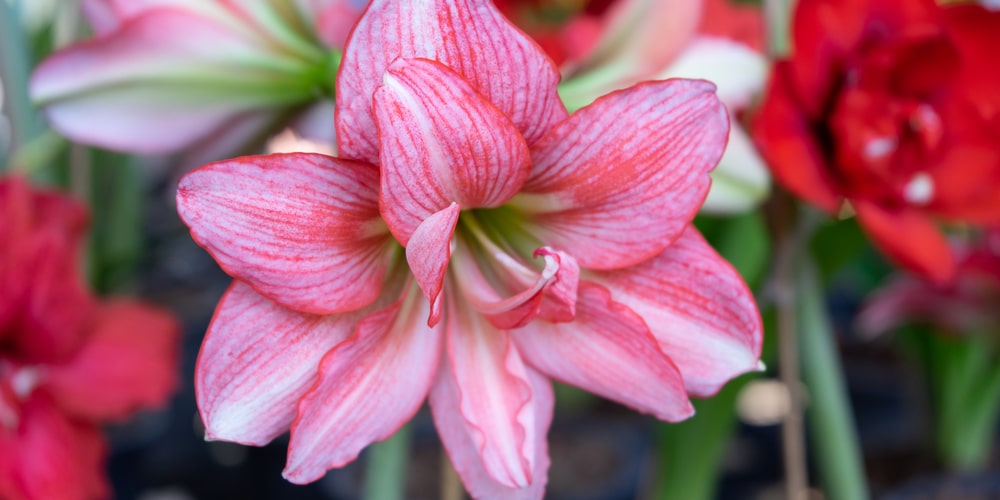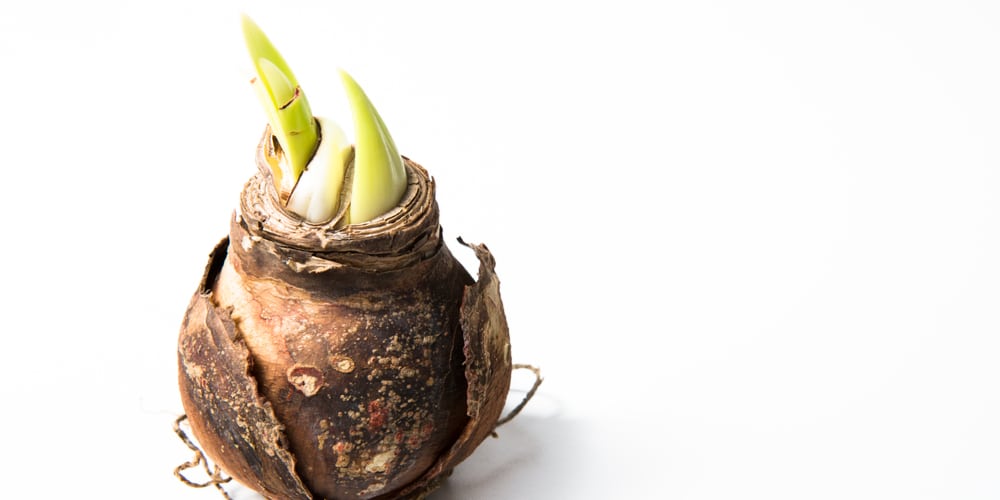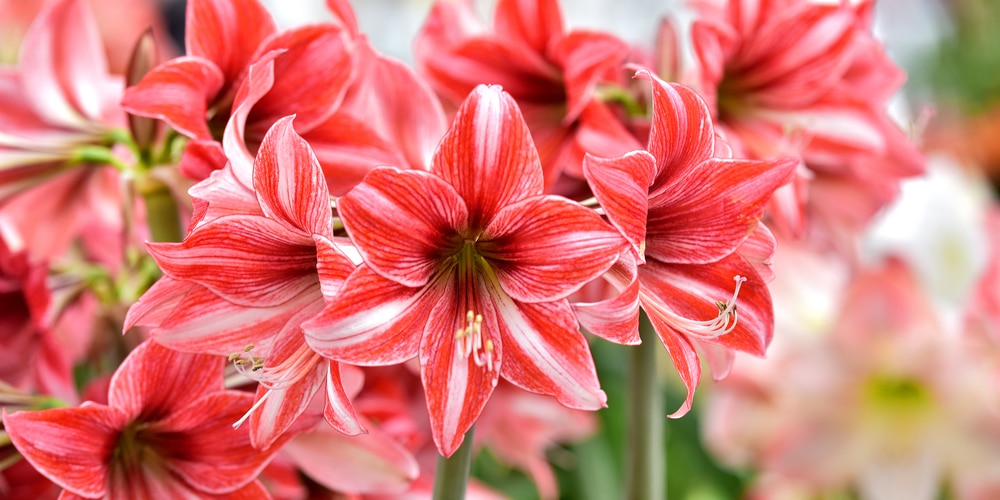Amaryllis is a tropical flowering bulb that produces gorgeous trumpet-shade and brightly colored flowers that will make your garden (or interiors) look more lively, no matter where you place them. And the best part is that they are easy to grow.
With little effort from your side, you’ll be able to enjoy their beauty during the spring. You can find varieties blooming in different colors (even variegated hybrids), so you’ll have no problems finding one that suits your taste.
Because of their native environment, these plants prefer moist soils, plenty of sunlight, and warm weather. If you plant them in well-draining soil, water them regularly, and provide them with the amount of sunshine they need, you shouldn’t struggle to grow them.
Consider getting a support structure to maintain them in an attractive shape. With proper care, you should be able to get the first blooms about six to eight weeks after planting. Don’t stress if that doesn’t happen to your amaryllis: some varieties can take as long as 12 weeks.
But what if your bulbs never grow? What might you be doing wrong with it? You are in the right place to find that out! Here, we included everything you should know if you wonder: “why isn’t my amaryllis bulb growing?”. Usually, that has to do with failure to provide your plants with what they need to thrive.
Why Isn’t My Amaryllis Bulb Growing
The most common causes include inadequate lighting, inappropriate temperatures, and dryness. But let’s analyze more closely what you can do about it.
Lack of Moisture
Amaryllis are tropical plants. They will probably never bloom If you fail to keep their soil moist. Sticking to a regular (and consistent) watering schedule is essential, but so is using a suitable potting mix. Don’t forget to pick well-draining soil and stay away from clay and heavy substrates: they won’t allow proper drainage and might leave your plant without the water it needs to thrive. Select the right potting mixture and consider adding compost to improve moisture retention.
Also, the size of the pot you choose might have an impact. The container should be heavy and about six to eight inches in diameter to prevent it from tipping over under the weight of the flowers.
Low Temperatures
Tropical plants need warmth to survive. If you live in a cold region and your amaryllis seems not to grow from its bulb, it is probably because the temperatures are too low. Avoid exposing these plants to conditions below 45F. Consider growing them as house plants if the outside environment doesn’t offer that.
Inappropriate Lighting
These plants need plenty of sunlight to initiate photosynthesis and reproduce. If you decide to put them inside, place them next to a south or east-facing window. Rotate your plants every couple of days to ensure all sides get the same amount of lighting, resulting in even growth.
Dormant Bulb
Another reason your amaryllis might not be growing could be due to a dormant bulb. While amaryllis doesn’t need a period of dormancy to produce blooms, some farmers might induce it to them (by not watering them) to control their flowering time. Water your bulbs abundantly to “wake them up.” Be careful: overwatering your plants can cause severe damage like root rot or deadly fungal infections that might kill your amaryllis.
Be patient: your bulbs won’t start producing straight away: give them the time they need to gain enough energy to create their stunning bloom!
Inadequate Watering
Watering a plant isn’t as straightforward as most people think: you’ll need to understand its requirements and avoid overdoing it (without leaving them struggling for moisture). Underwatering your amaryllis might cause halted growth and might never give you flowers. Only water your plant when the soil feels dry but don’t wait too long in between waterings to keep your plant moist.
Too Much Fertilizer
Fertilizers can be your best ally in the growth of your plants. However, overdoing it can cause severe issues. Always read the instructions you find on the package of the products you purchase to prevent burning the soil and destroying your plants with too many nutrients. Also, select slow-release products suitable for the growth of amaryllis.
Pests and Diseases
Finally, your plant might not grow due to pests and diseases sucking your amaryllis’ energy. You can prevent attacks by spraying your plants with insecticidal soaps or neem oil. If you see something off with your amaryllis, take immediate action to prevent the spread of diseases.
Related Article: Can Bulbs Survive in USDA Hardiness Zone 9?


